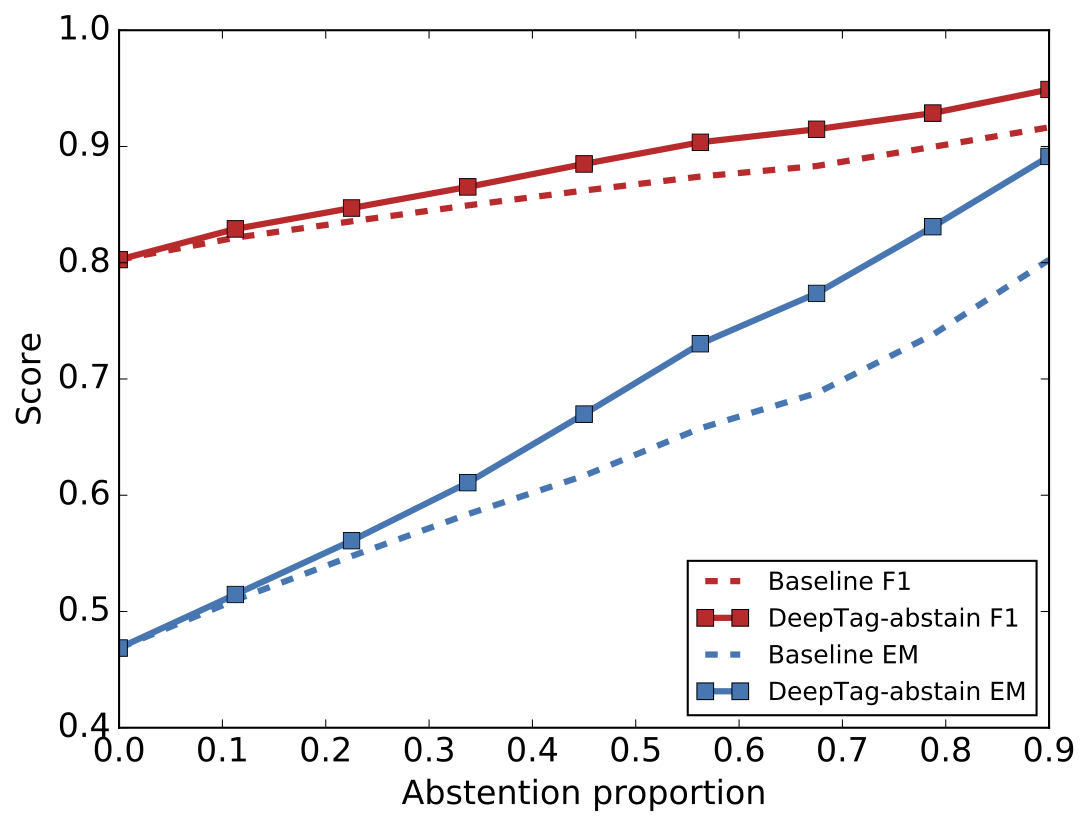
Automatic Abstention
DeepVet also learns to abstain in examples when it is uncertain and defers them to human experts, fostering human-machine collaboration.
In order to not mislead further clinical research, having the ability to abstain from making very erroneous predictions and ensuring highly precise tagging is an important feature.